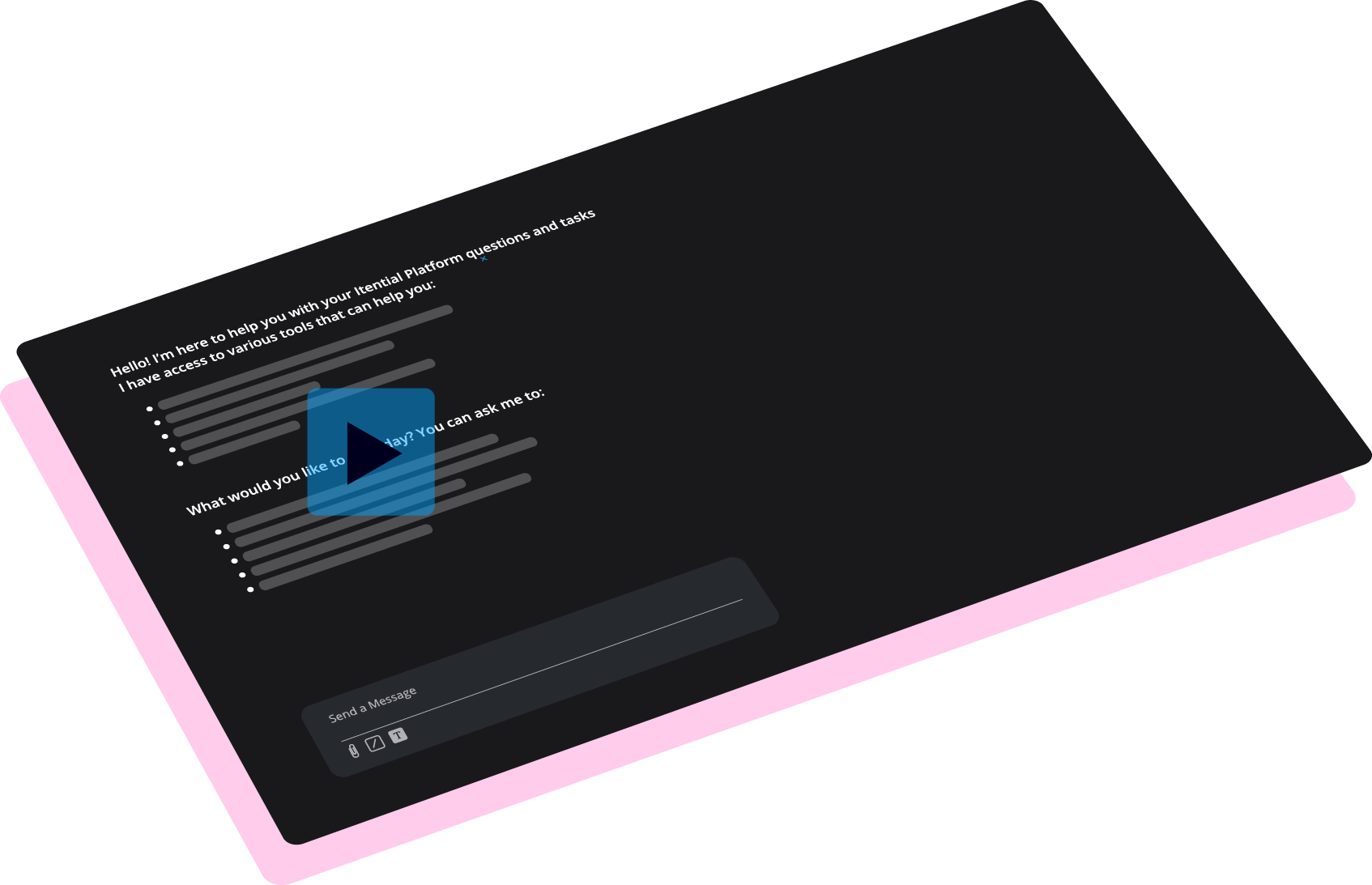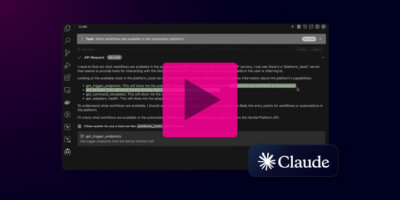Connect AI Agents to Enterprise Infrastructure with Governance, Context, & Control
The Itential Model Context Protocol (MCP) is the bridge between AI-generated intent and enterprise infrastructure. Built on the MCP open-source standard, it connects AI agents to Itential’s Platform, enabling safe, auditable, and policy-driven automation and orchestration execution at scale.
Capabilities
Where AI Meets Secure Enterprise Automation
The Itential MCP operationalizes the connection between AI agents and the Itential Platform, providing a structured, governed way to turn AI intent into real infrastructure actions. It ensures every AI-driven request enters the platform through the right protocols, context, and guardrails.
This separation of generation and execution is what allows enterprises to adopt AI with confidence.
Through Itential MCP, AI agents can:

Communicate Securely
using the open Model Context Protocol (stdio, HTTP).

Discover & Understand
what automation capabilities exist within the Itential Platform.

Send Structured Requests
that map to platform workflows and applications.

Robust Integration with the Itential Platform
for enforcement of RBAC, SSO, logging, and audit.
Secure Mediation & Translation
The MCP Server mediates all interactions between AI systems and the Itential Platform. It receives requests from AI agents, validates their structure, and translates them into platform-ready workflow actions or services (scripts, playbooks, opentofu). No AI has direct access to infrastructure – every request flows through MCP’s mediation layer.
- Implements the open Model Context Protocol (MCP) for structured communication between LLMs and Itential.
- Translates unstructured AI intent into workflows or services enabled by the Itential Platform.
- Supports stdio and HTTP transports for flexibility across agentic (or AI agent) environments.
- Maintains strict boundaries between AI interfaces and infrastructure execution.
- Logs all inbound and outbound exchanges for full traceability.
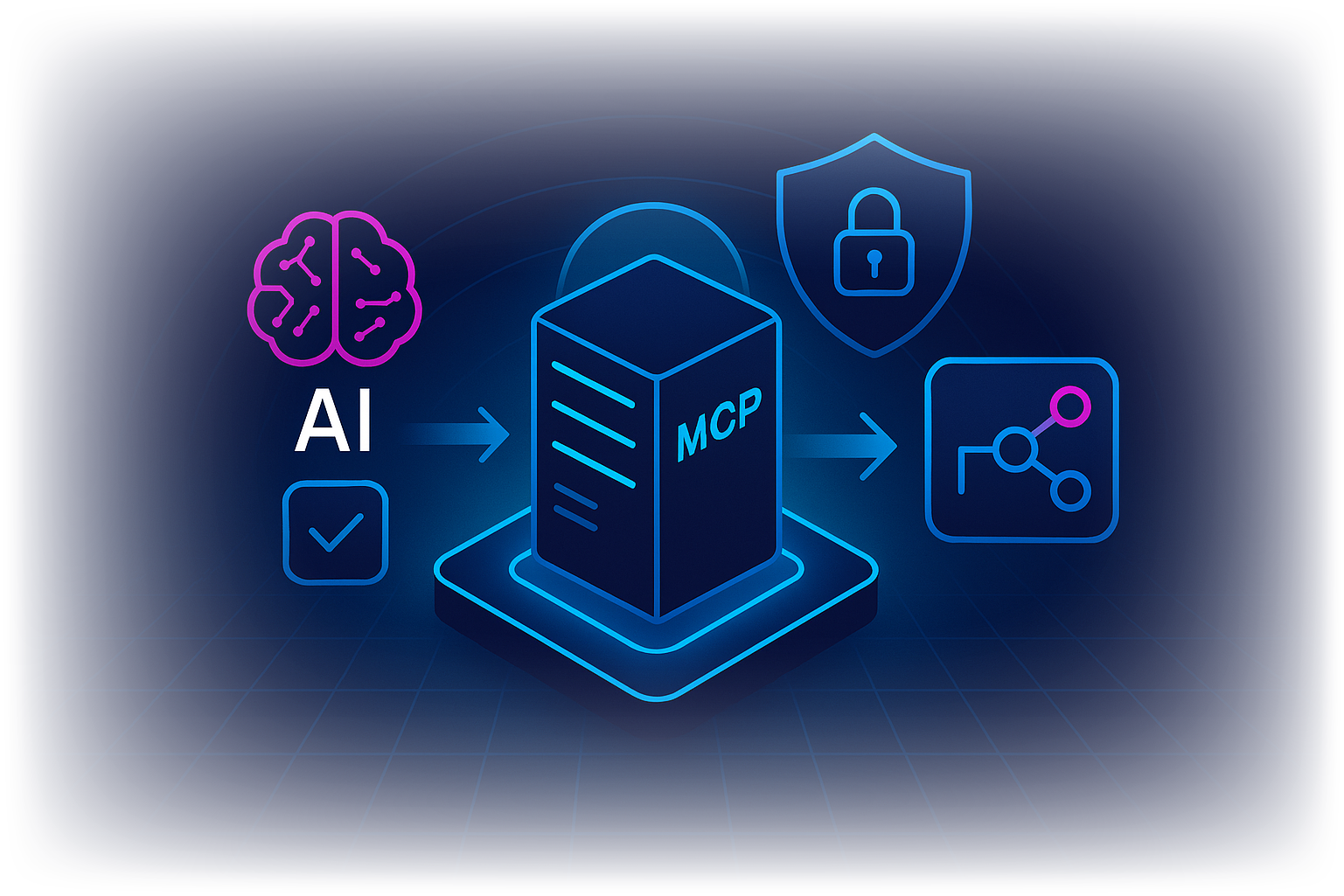
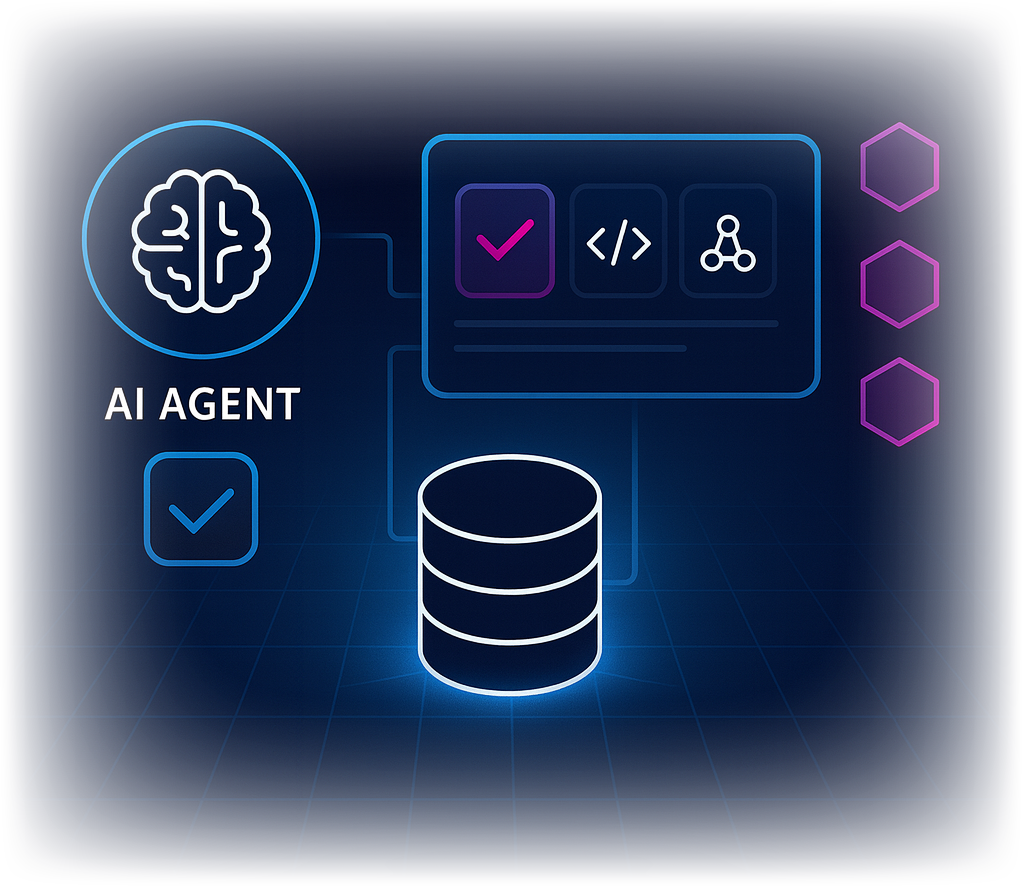
Tool Registry & Discovery
MCP dynamically registers Itential workflows, APIs, and data endpoints as tools that AI agents can query and invoke. This allows any MCP-compliant agent to discover what actions are available and how to call them – safely and predictably.
- Itential workflows are available as discoverable functions to be executed by MCP tools.
- Provides metadata and schema descriptions so AI agents know valid parameters and expected results.
- Supports tool introspection, allowing agents to discover available automation endpoints.
- Provides robust tagging mechanism to control which tools are exposed and to which agents.
- Enables consistent tool reuse across different AI models and client environments.
Intelligent Context & Schema Translation
AI output is often incomplete, ambiguous, or in free-form language. MCP brings order to that chaos by mapping AI-generated intent into structured schemas that align with Itential workflow inputs and data models.
- Validates and normalizes inbound data from AI clients against expected schemas.
- Converts AI responses into JSON-structured payloads consumable by Itential workflows.
- Ensures type-safe, schema-driven exchanges that prevent malformed or unsafe requests.
- Removes unnecessary details from the API outputs that are not relevant to the LLM’s reasoning.
- Returns structured, machine-readable responses for downstream AI reasoning or summaries.
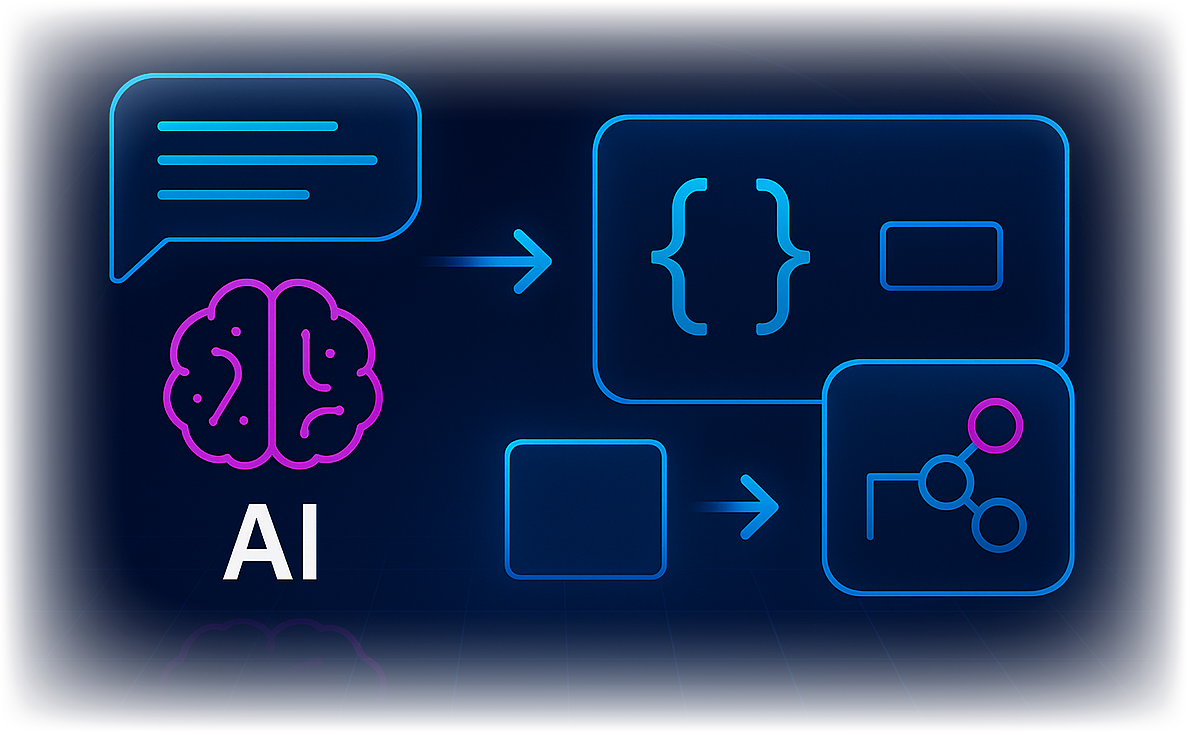
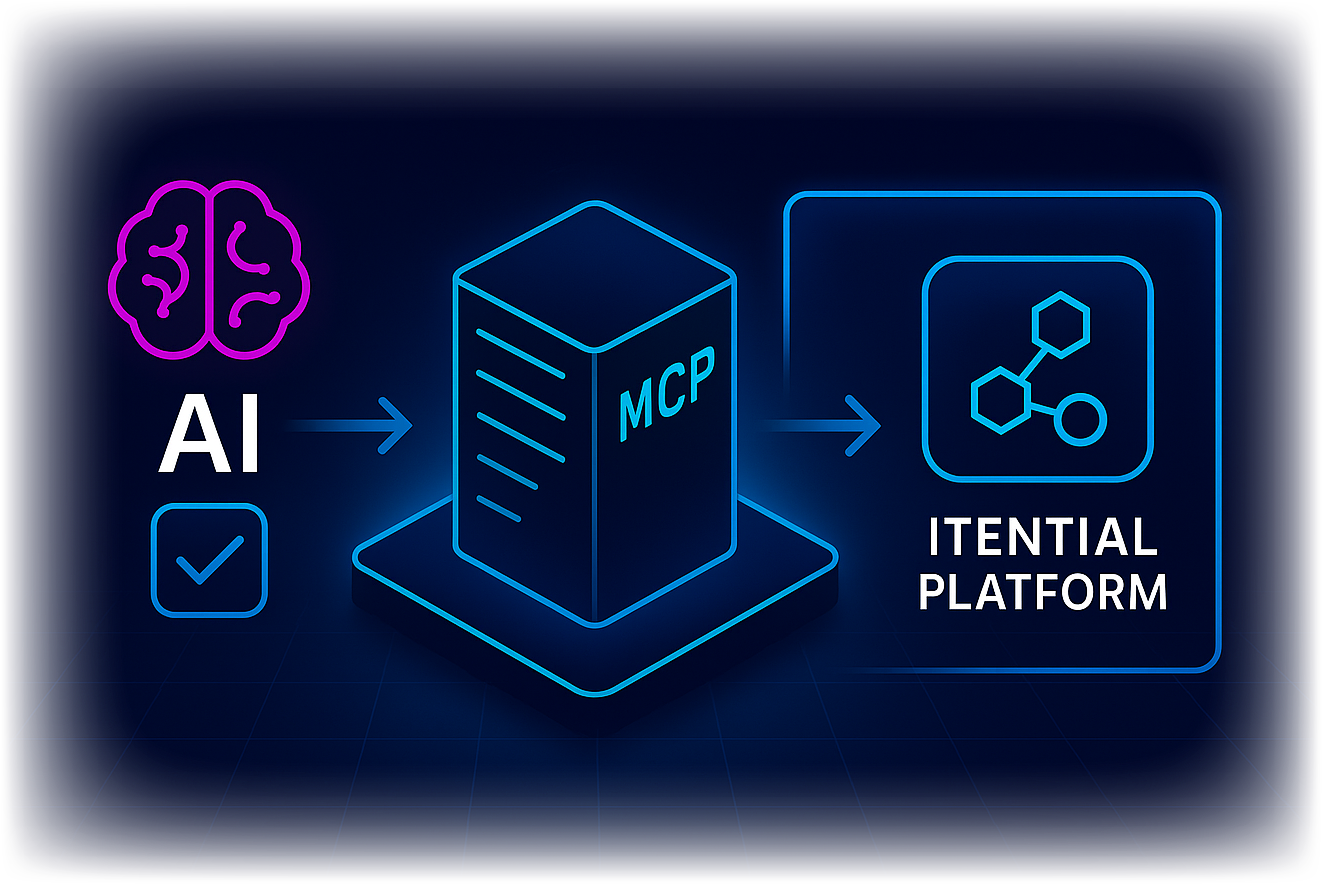
Deep Integration with the Itential Platform
The Itential MCP Server is designed to work with the Itential Platform – leveraging its governance, compliance, and orchestration strengths to safely execute AI-driven actions.
- Direct integration with Itential applications like Workflow Orchestration, Configuration Manager, Lifecycle Manager, Automation Gateway and more
- Executes all AI-initiated actions through the Platform’s RBAC, SSO, and audit framework.
- Maintains a clear handoff boundary: MCP mediates, the Platform executes.
- Extends Itential’s automation catalog into AI-accessible endpoints for copilots or assistants.
- Provides a complete, end-to-end audit trail from AI request to infrastructure change.
Architecture
Itential MCP Architecture
The MCP Server is engineered for interoperability and extensibility. It’s containerized, configurable, and adheres fully to the open MCP standard, enabling easy integration into existing DevOps or AI ecosystems.
- Fully containerized for portability across on-prem and cloud environments.
- Supports multiple authentication modes (basic, OAuth).
- Modular architecture with pluggable connectors for new tools and data sources.
- Configuration through environment variables or INI for automated deployment pipelines.
- Open-source compatibility with the evolving MCP specification.
How It Works
AI Intent Meets Enterprise-Grade Secure Execution
The Itential MCP Server establishes a controlled interface between AI systems and the Itential Platform. Every AI-driven action follows a predictable, governed flow – ensuring that automation happens under the same compliance, logging, and security standards that already govern enterprise infrastructure.
MCP’s architecture is intentionally simple but powerful: it sits between the AI layer (where ideas are generated) and the Itential Platform layer (where automation is executed).
It acts as a translator, validator, and router, guaranteeing that nothing generated by AI reaches production systems without passing through Itential’s guardrails.
AI Agent, LLM or Copilot Generates Intent
A user or system-level AI assistant produces a request – for example, “Check compliance on all edge routers” or “Remediate the routing anomaly.” That request is sent to the Itential MCP Server.
Supported transports: stdio, HTTP
Compatible with any MCP-compliant client or LLM framework
Handles authentication and session validation at the edge
MCP Receives, Validates & Translates
MCP parses the request, confirms it matches a known tool or workflow schema, and translates it into a structured API call recognized by the Itential Platform. It ensures that each AI request contains required parameters and that no unrecognized or unsafe calls are forwarded.
Validates schema & syntax against registered tools
Enforces data type, structure, & field requirements
Logs all inbound requests for full audit visibility
Handoff to the Itential Platform
Once validated, the structured request is routed into the Itential Platform, where all governance and policy enforcement occurs. The Platform authenticates execution based on user or agent identity and executes the request using the appropriate application or workflow.
Workflows executed through Itential Workflow Orchestration
Full RBAC, OAuth, & audit logging applied automatically
Platform policies & approvals determine execution eligibility
Execution & Infrastructure Change
The Itential Platform performs the requested change – whether it’s running a workflow, pushing a configuration, or triggering a compliance check – across any connected system: network, cloud, or hybrid infrastructure.
Executes through existing automation engine & integrations
Captures output, telemetry, & result state for each task
All actions are traceable back to their originating AI intent
Response & Feedback to the AI Agent
After execution, the Itential Platform returns a structured response to the MCP Server, which relays it back to the requesting AI client. This allows the agent to understand what happened, interpret results, or continue the workflow loop with contextual awareness.
Standardized response format for LLM-friendly parsing.
Includes workflow output, success/failure status, & execution logs
Enables closed-loop automation: AI proposes, Itential executes, AI learns
MCP Use Cases Across the Itential Ecosystem
Powering safe AI-driven automation and orchestration across every layer of your infrastructure.
AI agents can create and execute compliance jobs against infrastructure, propose or validate configuration changes, with every request routed through Itential’s compliance and approval workflows for safe execution.
Natural-language requests or AI insights can trigger structured, policy-driven workflows that span multiple systems and environments. Additionally, Itential workflows can call agents within a workflow for agentic orchestration.
AI agents can provision infrastructure resources and execute Day 2 operations – like updates, compliance checks, and deprovisioning – on those resources throughout their lifecycle, all orchestrated through Itential’s LCM pipelines with full policy governance.
AIOps & Observability Integrations
AI-driven detections or alerts from monitoring tools can safely trigger closed-loop remediation through the Itential Platform’s orchestration layer.
Teams can register internal APIs or automation endpoints as MCP tools, making Itential’s capabilities securely accessible to custom AI agents or domain-specific models.
Get Started with Itential
- MCP: The Modern CLI or the Missing Link to AI-Driven Ops?
- AI’s Rewriting Automation & Itential’s MCP Server Is Your Guide
- Automation & AI in Austin, Getting Started with MCP, & More
- Context as the New Currency: Designing Effective MCP Servers for AI
- From Friction to Flow: Why MCP Matters for NetOps
- From Scripting to Reasoning: The Future of Network Automation with MCP & Agentic AI
- How to Leverage Itential MCP & Agentic AI For Network Config Compliance
- How to Leverage Itential MCP & Agentic AI to Reduce Network & Security Troubleshooting Time
- Infrastructure Operations Automation Is Here, Thanks to MCP and Agentic AI
- Itential MCP Demo | Trigger Network Automation with a Simple Ask
- Packet Pushers: Itential MCP Server & AI-Powered Network Operations
- AI Hype: Reality Check for Network Engineering
